When you notice that your dog won’t eat, it can be concerning and stressful. Understanding the reasons behind this behavior is essential for ensuring your furry friend’s health and happiness. Dogs may refuse food for a variety of reasons ranging from health issues to behavioral factors. Here, we delve into common causes of anorexia in dogs and offer practical solutions to encourage renewed interest in their meals.
Common Reasons Your Dog Won’t Eat
- Health Issues: A sudden change in eating habits can signal underlying health problems. Conditions like dental issues, gastrointestinal disturbances, or infections can make your dog uncomfortable, leading to a decreased appetite. It’s also important to consider more serious conditions like kidney disease or cancer, which can significantly affect a dog’s desire to eat. If your dog not only refuses food but also exhibits other concerning symptoms like vomiting, diarrhea, or lethargy, it’s crucial to consult your veterinarian immediately.
- Food Preferences: Dogs can be quite particular about their food. A change in diet or food brand can lead to rejection if your dog doesn’t like the taste or texture. Additionally, older dogs may develop sensitivity to specific ingredients, making them more reluctant to eat. Ensure you’re using high-quality dog food that matches your pet’s taste profile.
- Environmental Factors: Stressful changes in your dog’s environment, such as moving to a new home, the arrival of a new pet, or loud noises, can impact their eating habits. Dogs can experience anxiety just like humans, and an anxious dog may refuse to eat. Create a calm and safe feeding area to help reduce these anxieties.
- Age-related Factors: Senior dogs may face reduced appetite due to age-related changes. Their metabolic rate slows down, and they may experience dental issues that make it painful to chew. It’s essential to adapt their diet according to their changing needs.
- Past Experiences: If a dog has had negative experiences related to food, they may avoid eating. This could include instances of being scolded or punished while eating or being fed on a tight schedule that causes them stress.
Practical Solutions to Encourage Eating
If you’re facing the challenge of a dog that won’t eat, consider these solutions:
- Veterinary Check-Up: If your dog’s eating habits suddenly change, a visit to the vet is necessary. They can rule out any medical problems that may be affecting your dog’s appetite.
- Food Temperature: Dogs are more inclined to eat warm food since it enhances aroma. Try warming your dog’s food slightly to see if that sparks interest.
- Add Flavor Enhancers: If your dog dislikes the taste of their current food, you can sprinkle a little bit of low-sodium chicken or beef broth on their kibble to enhance the flavor. Just ensure that any additives are safe for dogs.
- Routine Feeding Schedule: Establish a regular feeding schedule by offering food at specific times and removing it after 20-30 minutes if it’s uneaten. This helps encourage your dog to eat when food is available.
- Engagement: Use mealtime as an opportunity to bond with your dog. Play a game or teach them new tricks before offering food to create a more positive association with eating.
- Explore Different Foods: Consider switching to a more appealing food brand or type. Wet food is typically more appetizing for dogs than dry kibble, so it might be worth trying a different flavor or formulation.
When to Seek Professional Help
Persistent refusal to eat is a serious issue. If your dog skips meals for more than 24 hours or shows signs of distress, it’s essential to consult a veterinarian. They can provide insights specific to your dog’s health and recommend a suitable course of action.
For more insights on your dog’s feeding habits, you can visit the American Kennel Club or check information from ASPCA.
Monitoring your dog’s eating habits can lead to happier and healthier life. By understanding why your dog won’t eat and implementing the right solutions, you can help reinstate their interest in food and improve their overall well-being.
Understanding Canine Nutrition: What Dogs Need in Their Diet
Dogs are more than just pets; they’re beloved companions that thrive on proper nutrition for overall health and happiness. When feeding your dog, it’s crucial to understand their dietary needs, as this can significantly impact their quality of life and longevity. Here, you’ll discover what dogs truly need in their diet for optimal health.
Essential Nutrients for Dogs
Just like humans, dogs need a balanced diet that contains essential nutrients. The primary components of a dog’s diet include:
- Proteins: Vital for growth and repairing body tissues. Look for high-quality meat sources like chicken, beef, and fish.
- Fats: Important for energy and the absorption of certain vitamins. Healthy fats can be found in fish oil and flaxseed.
- Carbohydrates: Provide energy and aid in digestion. While dogs can digest carbs, they should come from wholesome sources like brown rice or sweet potatoes.
- Vitamins: Essential for various body functions. A well-rounded diet will typically provide enough vitamins, but you may consider supplements if needed.
- Minerals: Important for bone health and metabolic processes. Calcium and phosphorus are particularly critical for growing puppies.
- Water: Often overlooked, water is essential for hydration and various bodily functions. Always ensure your dog has access to fresh water.
Understanding Commercial Dog Food
When choosing commercial dog food, you’ll encounter two main types: dry kibble and wet food. Both can be nutritious, yet have unique benefits:
| Type of Food | Benefits |
|---|---|
| Dry Kibble | Convenient, promotes dental health, and often less expensive. |
| Wet Food | More palatable, higher moisture content, and great for picky eaters. |
When selecting a commercial dog food brand, check for an AAFCO statement that confirms the food meets established nutritional standards.
Homemade Diets for Dogs
If you prefer to prepare your dog’s meals at home, it’s important to create balanced meals. Here are some components to include:
- Cooked lean meats such as chicken or turkey.
- Cooked grains like brown rice or oatmeal.
- Vegetables such as carrots, peas, and spinach.
- A small amount of healthy fats like olive oil or fish oil.
Consult with your veterinarian to ensure you’re meeting all your dog’s nutritional needs when preparing homemade meals.
Foods to Avoid
While many foods are safe and healthy for dogs, some can be toxic. Avoid giving your dog:
- Chocolate
- Grapes and raisins
- Onions and garlic
- Xylitol (found in sugar-free gum and some peanut butters)
Understanding what not to feed your dog can prevent health issues and ensure they stay happy and healthy.
Monitoring Your Dog’s Weight
Maintaining a healthy weight is crucial. Obesity can lead to several health problems including diabetes and heart disease. Regularly monitor your dog’s weight and body condition. If you notice any significant changes, consult your veterinarian for guidance on dietary adjustments.
Feeding Schedules
Establishing a feeding schedule can help in regulating your dog’s diet. Here are some tips:
- For puppies, feed 3-4 times a day.
- For adult dogs, feeding twice daily is usually sufficient.
- Always stick to a consistent schedule to avoid digestive issues.
Understanding your canine’s nutritional needs is a fundamental responsibility that can greatly enhance their health and well-being. Whether you choose commercial or homemade dog food, ensuring a balanced diet will keep your furry friend active, happy, and healthy. For more detailed information on dog nutrition, visit AKC and ASPCA.
The Impact of Stress and Environment on a Dog’s Appetite
Many dog owners experience worry when their furry friends suddenly lose interest in food. Understanding the factors that can influence your dog’s appetite is crucial for their overall well-being. Stress and environmental changes can significantly impact what and how much your dog eats. Let’s explore these crucial aspects further.
Firstly, it’s essential to identify how stress affects a dog’s appetite. Just like humans, dogs can feel stressed due to various reasons, including:
- Changes in routine or environment
- New family members or pets
- Traveling or relocating
- Loud noises like fireworks or thunderstorms
- Visits to the vet or groomers
When stressed, many dogs may show signs of anxiety. These signs can include panting, pacing, and even hiding. A stressed dog may begin to associate mealtimes with discomfort or anxiety, leading them to avoid eating altogether. As a responsible pet owner, it’s essential to alleviate their stress in these situations.
Next, let’s consider how your dog’s environment can impact their eating habits. Dogs are sensitive to their surroundings. Factors that can create an unappetizing eating environment include:
- High noise levels
- Distracting smells from nearby cooking or other pets
- Uncomfortable feeding areas (hot, cold, or drafty places)
- Dirty or unwashed food and water bowls
If your dog feels unsafe or distracted during feeding times, they may choose to forgo their meals. It’s vital to create a calm and inviting space for your dog to enjoy their food, ensuring they feel both secure and comfortable.
Another interesting factor to consider is the connection between routine and feeding. Dogs thrive on routine. If their mealtime suddenly changes, it may lead to confusion or apprehension. Consistency in feeding times can help ease stress and stimulate appetite. A typical dog feeding schedule might look something like this:
| Time | Activity |
|---|---|
| 7:00 AM | Morning walk |
| 7:30 AM | Breakfast |
| 12:00 PM | Midday playtime |
| 5:30 PM | Dinner |
| 8:00 PM | Evening walk |
It’s also crucial to address health concerns when your dog refuses to eat. Sometimes, a lack of appetite can be a sign of an underlying health issue. If your dog has stopped eating for more than a couple of days or shows other symptoms like vomiting or lethargy, please consult your veterinarian. They can provide guidance and necessary treatment.
Here are some tips to encourage your dog to eat, considering stress and environmental factors:
- Maintain a consistent feeding routine.
- Feed in a quiet, comfortable area without distractions.
- Use calming products like pheromone diffusers to reduce anxiety.
- Try warming the food slightly to enhance the aroma.
- Mix a little wet food with dry kibble to make meals more appealing.
Additionally, monitor your dog’s behavior. If you notice changes in activity levels or bathroom habits, document these observations for your vet. Remember, being proactive about your dog’s well-being can make all the difference. For more detailed insights into dog behavior and appetite, consider visiting AKC or Dog Health.
Being attentive to your dog’s stressors and their environment can help ensure they enjoy their meals and maintain a healthy appetite. By providing a calm eating space and routine, you can promote not only a happier dog but also a healthier one.
How to Encourage Picky Eaters: Tips for Pet Owners
As a pet owner, it can be concerning when your dog refuses to eat. A decrease in appetite might signal various issues, from health problems to simply being a picky eater. Luckily, there are several ways to encourage your furry friend to return to mealtime with enthusiasm.
Understand Why Dogs Become Picky Eaters
Dogs may be discerning eaters for many reasons. Some common factors are:
- Health Issues: A sudden change in appetite might indicate an underlying health problem. Always consult your vet if this behavior persists.
- Food Preferences: Some dogs develop strong preferences for certain flavors or textures. This picky behavior can develop over time.
- Environmental Factors: Changes in your dog’s environment, such as moving to a new home or the introduction of new family members, can affect their eating habits.
- Stress or Anxiety: Just like humans, dogs can feel stressed, which may cause them to decline their meals.
Tips to Encourage Your Picky Eater
If your dog seems uninterested in their food, here are some tips you can try.
1. Stick to a Feeding Schedule
Consistency is key. Establish set meal times and stick to them. Leave the food out for 15-30 minutes, and if your dog doesn’t eat, remove it until the next feeding time. This method can help your dog learn that they need to eat when food is available.
2. Choose High-Quality Food
Invest in a high-quality dog food that is tailored to their unique needs. Look for brands that use real meat as the primary ingredient. If you’re unsure what to choose, check out resources like the American Kennel Club (AKC) for recommendations.
3. Add Food Toppers or Mix-Ins
Sometimes, dogs need a little extra incentive. You can try adding:
- Broth: Low-sodium chicken or beef broth can make the meal more appealing.
- Vegetables: Steamed carrots, peas, or pumpkin can add flavor and texture.
- Meat: Adding a small amount of boiled chicken or beef can entice your pet.
4. Warm the Food
Heating your dog’s food can enhance its aroma, making it more inviting. A few seconds in the microwave can make a difference, but be sure to check that it isn’t too hot for your dog.
5. Change the Meal Container
Some dogs may prefer certain types of bowls or containers for their food. Experiment with different styles to see if your dog has a preference.
6. Minimize Distractions
Ensure your dog has a quiet space free of distractions during mealtime. Sometimes other pets or loud noises can deter a dog from eating.
7. Establish a Positive Feeding Environment
Make mealtime a positive experience. Sit with your dog while they eat and refrain from interrupting them. Praising your pet can encourage a more positive association with their food.
Monitor for Any Health Concerns
Always keep an eye on your dog’s overall health. Refusing food for more than 24 hours can lead to serious health issues, particularly in small breeds. If your dog shows any other symptoms, such as vomiting or lethargy, it’s important to consult your veterinarian promptly.
When to Consult a Vet
If your dog’s picky eating becomes a chronic issue, it’s crucial to investigate potential health problems. Your vet can perform tests to rule out underlying issues and recommend dietary changes that suit your pup’s health needs.
By understanding your dog’s behavior and experimenting with the tips outlined above, you can foster a healthy eating routine for your furry friend. Remember, patience is vital as you navigate the picky eating journey.
For further information on pet care and nutrition, take a look at AKC’s Nutrition Page and ASPCA’s Pet Care Resources. These sites offer valuable insights to help you become the best pet owner you can be.
When to Seek Help: Recognizing Signs of Serious Health Issues in Dogs
As a responsible pet owner, it’s essential to be aware of your dog’s health. Sometimes, dogs can experience issues that require immediate attention. Knowing when to seek help can make a significant difference in their well-being. Here are some signs that may indicate serious health problems in your furry friend.
Unusual Behavior
Your dog’s personality can say a lot about its health. If your normally playful pup becomes lethargic or hides away, it could be a sign of discomfort or illness. Pay attention to changes in their behavior, such as:
- Withdrawal from social interactions with family members or other pets
- Loss of interest in favorite activities like playing or walks
- Increased aggression or irritability
These changes can sometimes signal underlying health issues that need veterinary evaluation.
Changes in Appetite and Thirst
Monitoring your dog’s eating and drinking habits is crucial. If you notice significant alterations, you should take note. Signs that warrant concern include:
- Refusing to eat for more than a day
- Excessive thirst paired with frequent urination
- Sudden increase or decrease in appetite
These variations can indicate various health worries, from dental issues to metabolic disorders.
Digestive Problems
Gastrointestinal upset can be uncomfortable and potentially harmful. Keep an eye out for symptoms such as:
- Vomiting, especially if it occurs more than once or has blood in it
- Diarrhea that lasts for more than 24 hours
- Bloating or a distended abdomen
These signs may suggest more severe conditions like pancreatitis, intestinal obstructions, or infections. If symptoms persist, a vet visit is necessary.
Weight Changes
Unexpected weight gain or loss can be a cause for alarm. Significant fluctuations can indicate health problems such as:
- Hormonal imbalances like hypothyroidism
- Kidney disease or liver issues
- Diabetes
Monitoring your dog’s weight regularly can help you catch these concerns early.
Respiratory Issues
Breathing problems can escalate quickly and may be life-threatening. Pay attention to signs like:
- Persistent coughing or wheezing
- Labored breathing or excessive panting
- Blue-tinged gums
If your dog exhibits these symptoms, urgent veterinary attention is necessary.
Skin and Coat Changes
Your dog’s coat and skin can indicate overall health. Look for:
- Excessive scratching, licking, or biting at the skin
- Hair loss or changes in coat texture
- Redness, swelling, or unusual lumps
Dermatological issues can stem from allergies, parasites, or more severe conditions that require veterinary intervention.
Joint and Mobility Issues
If your dog shows a reluctance to move or displays stiffness, it may be a sign of joint pain or other conditions like arthritis. Watch for:
- Difficulties in rising or laying down
- Clumsiness or limping
- Unusual vocalizations when moving
Address these symptoms quickly to prevent further discomfort and mobility loss.
Whenever you notice any of these alarming signs in your dog, it’s important to consult with a veterinary professional. Early detection can greatly improve treatment outcomes. For more information on canine health, check out websites like AVMA and ASPCA. They provide information to better understand your dog’s health and well-being.
Being vigilant about your dog’s health will ensure it leads a happy and healthy life. By recognizing the early signs of potential health issues, you can act quickly and provide your dog with the care it needs.
Conclusion
A dog that won’t eat can be a source of worry for any pet owner. Understanding the common reasons for this behavior is vital. Factors like stress, environment, and dietary needs all play significant roles in your dog’s appetite. By recognizing what your dog requires nutritionally, you can ensure they receive a balanced diet that meets their needs. If your furry friend is a picky eater, implementing various tips can help make mealtime more enjoyable. Simple adjustments like introducing new textures, flavors, or even feeding schedules can spark their interest.
However, it’s crucial to remember that changes in appetite sometimes signal underlying health issues. Keeping an eye on your dog’s overall behavior, such as energy levels and habits, is necessary. If you notice any worrying signs along with the lack of appetite, don’t hesitate to consult with a veterinarian for guidance. They can provide a thorough assessment and determine if there’s a health problem.
Ultimately, addressing the reasons why your dog won’t eat can lead to healthier habits and happier mealtimes. Caring for your dog means understanding both their physical needs and emotional well-being. By fostering a positive eating environment and being attentive to any concerning signs, you can help ensure your pet thrives and enjoys their food. Always remember, a happy dog is one that feels loved, understood, and well-fed.

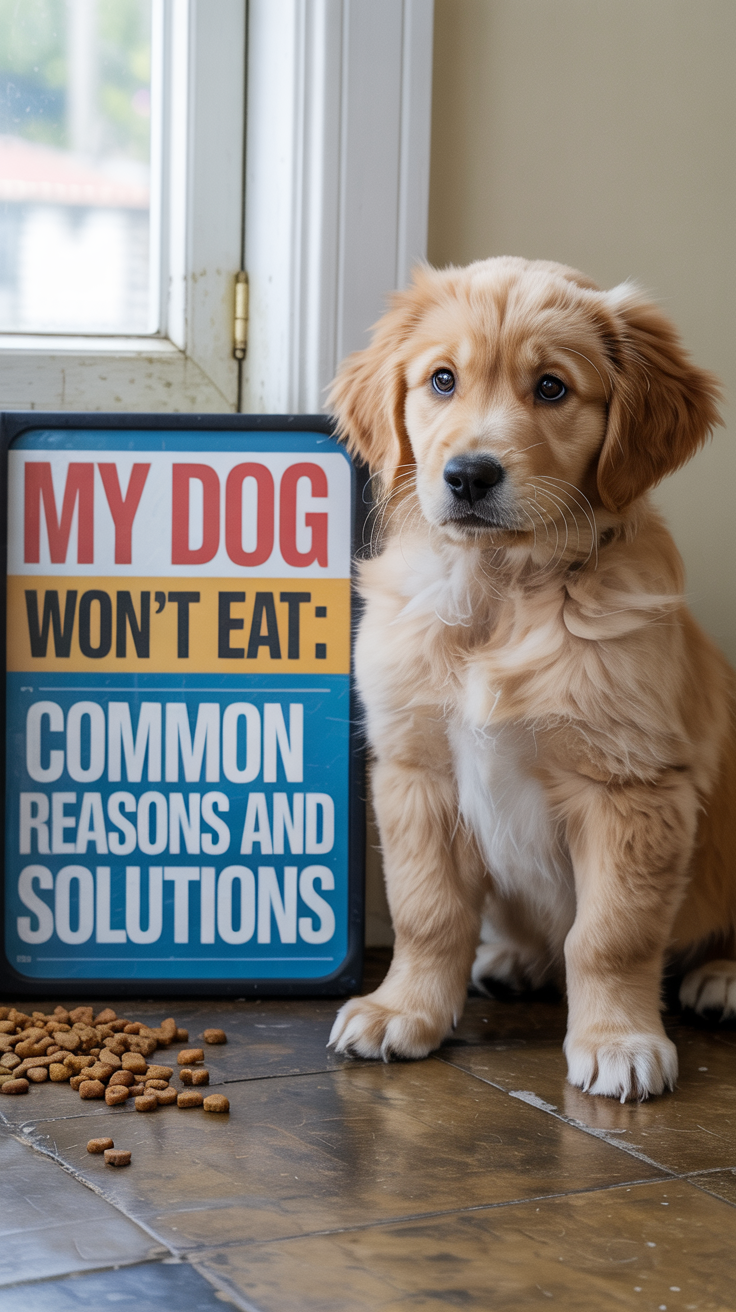


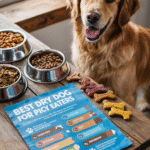
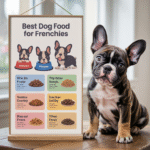
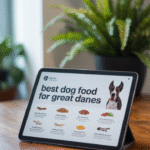
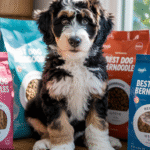
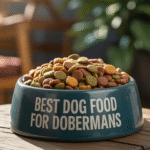


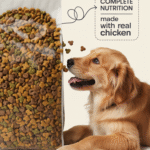
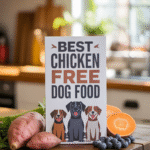

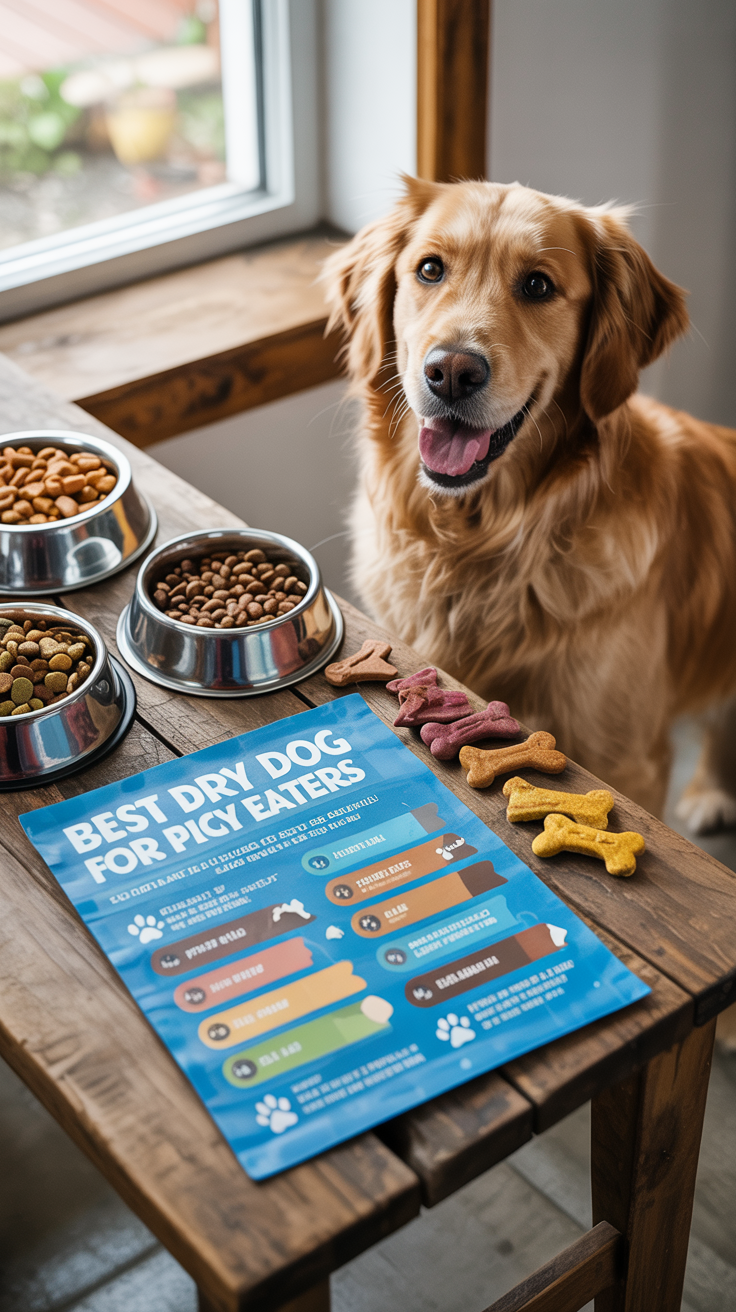
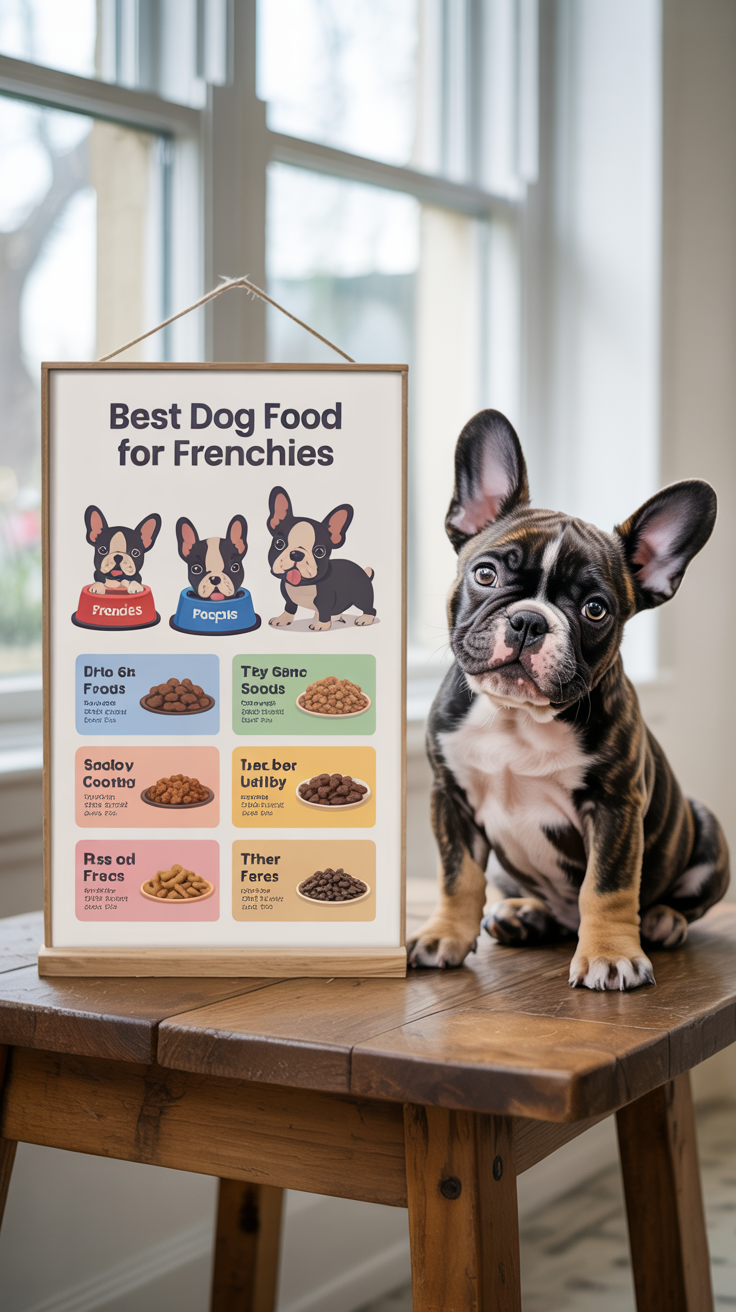
Leave a Reply